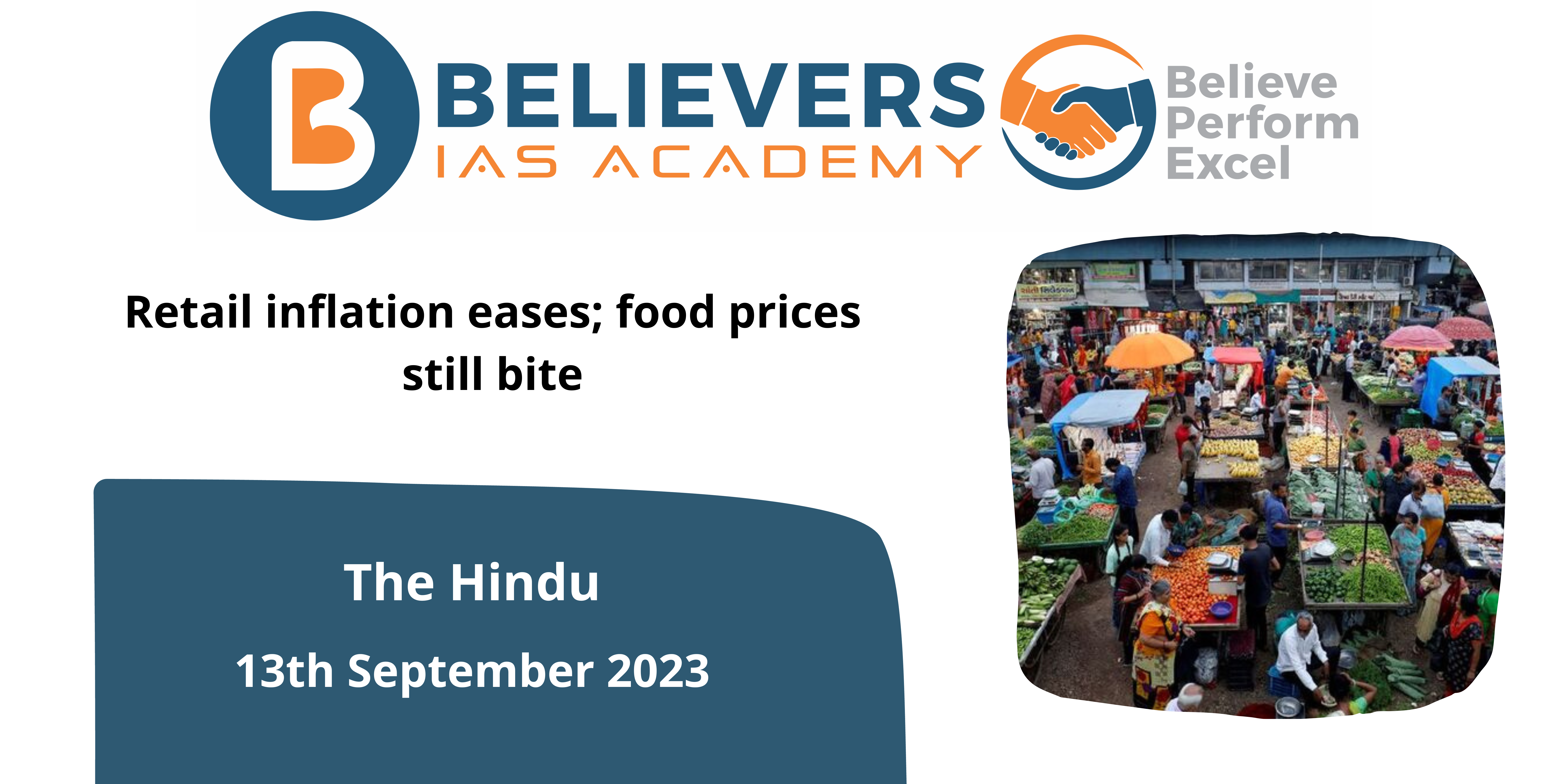Retail inflation eases; food prices still bite
Context
The increase in food prices remained high at almost 10%, and rural consumers continued to experience inflation of more than 7%, even though India’s retail inflation fell marginally to 6.83% in August from the 15-month high of 7.44% in July.
What is the Consumer Price Index(CPI)?
- An economic indicator called the Consumer Price Index (CPI) tracks the average change in prices consumers pay over time for a selection of products and services. Using a representative basket of goods and services, the CPI is determined. The CPI is determined by the Bureau of Labor Statistics and released each month.
- The CPI keeps track of how prices evolve. The CPI is closely monitored by the central bank to keep prices stable.
- In the past year, the CPI for All Urban Consumers (CPI-U) grew 3.2%, reaching an index level of 305.691. Before seasonal adjustment, the index rose 0.2% for the month.
- The CPI and WPI are used by the RBI to determine inflation in India. India’s headline retail inflation increased to a 15-month high of 7.44% in July before declining to 6.83% in August.
What is the present retail inflation rate in the country?
- In August, India’s retail inflation rate decreased marginally to 6.83% from a 15-month high of 7.44% in July. Food costs, meanwhile, continued to rise by about 10%, and rural people continued to experience inflation of more than 7%.
- Vegetable Prices: After surging by 37.4% in July, the year-over-year increase in vegetable prices dropped but remained high at 26.1% in August. The Consumer Price Index (CPI) for August decreased dramatically as a result of the price fall in vegetables.
- Cereals and pulses: From about 13% in July to 11.85% in August, cereal inflation significantly abated. However, the price of pulses increased by 13% once more, prompting worries that lesser kharif (monsoon) sowing could cause prices to increase in the upcoming months.
What is the Reserve Bank of India’s take on inflation?
- Concerns about food inflation include accelerated inflation in seven of the index’s 12 food groups. Due to the possibility that continuously high food prices may have an impact on other elements of the consumption basket, there have been worries voiced about the prognosis for food inflation, which is still a crucial monitorable.
- Reserve Bank of India (RBI): According to economists, the RBI may not be very worried about the brief two-month sequence of inflation that exceeded its 6% upper tolerance barrier. They do, however, continue to be on the lookout, particularly for food inflation. High food inflation, if it persists, may affect other CPI components and the RBI’s monetary policy actions.
What are the other areas where there was inflation?
- Other inflation statistics: In addition to vegetables, milk, spices, eggs, meat, and fish all saw noticeable inflation. The rates were 7.7%, 23.2%, 4.3%, and 3.7%, respectively. The inflation rate for fruits was 4.05%. The only food item to see a price decrease was edible oils and fats.
- Regional Variation: Inflation rates varied significantly among Indian states. Rajasthan experienced an 8.6% increase in prices, while Delhi had the lowest inflation in August at 3%. In other areas, lower inflation may have been facilitated by subsidies on goods like tomatoes.
Conclusion:
In conclusion, policymakers are nonetheless concerned about persistently high food prices and the possibility of a spillover into other CPI components despite a minor decrease in retail inflation in India in August. To ensure price stability, the RBI will continue to closely monitor the situation and take appropriate action.





